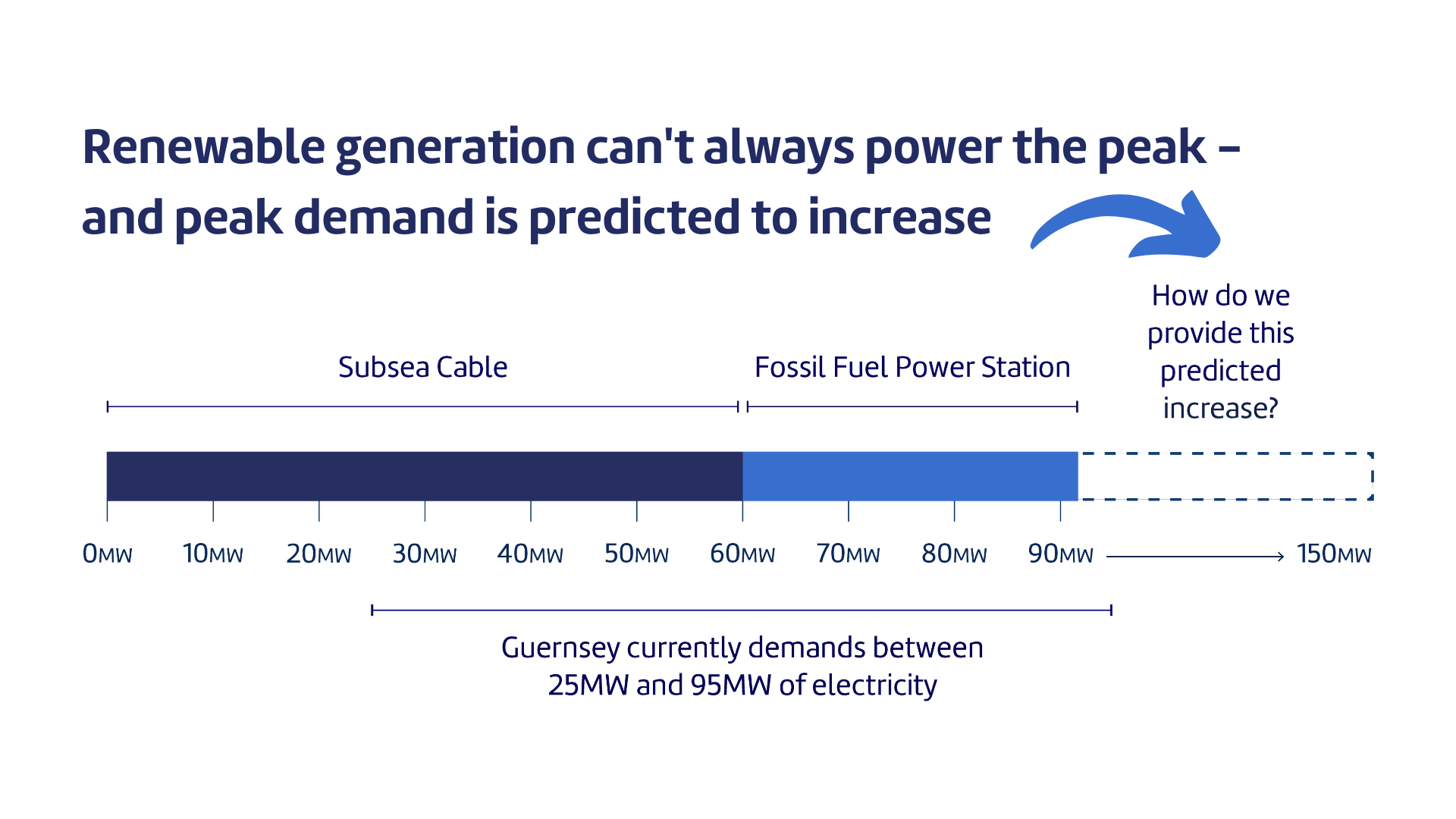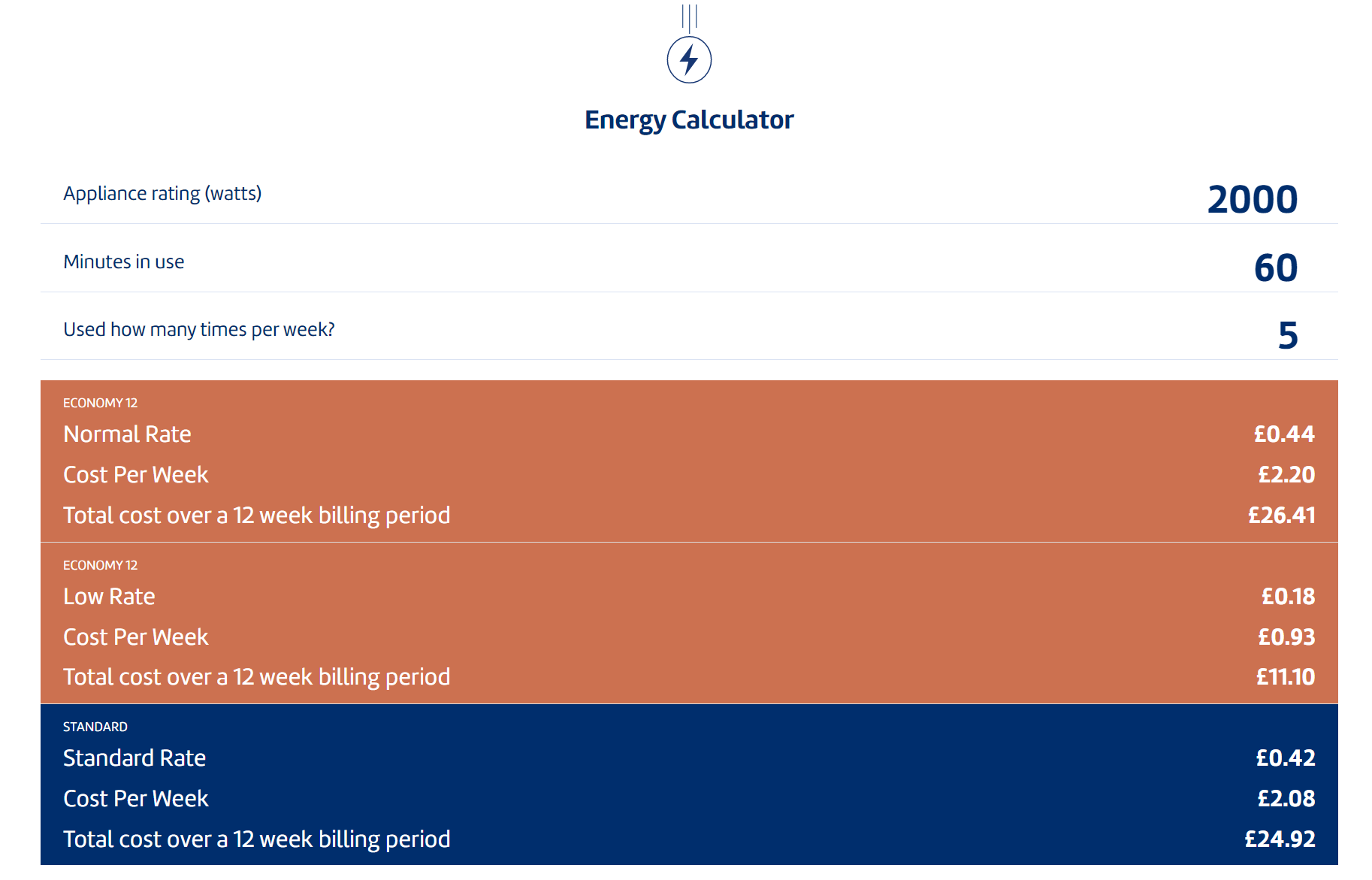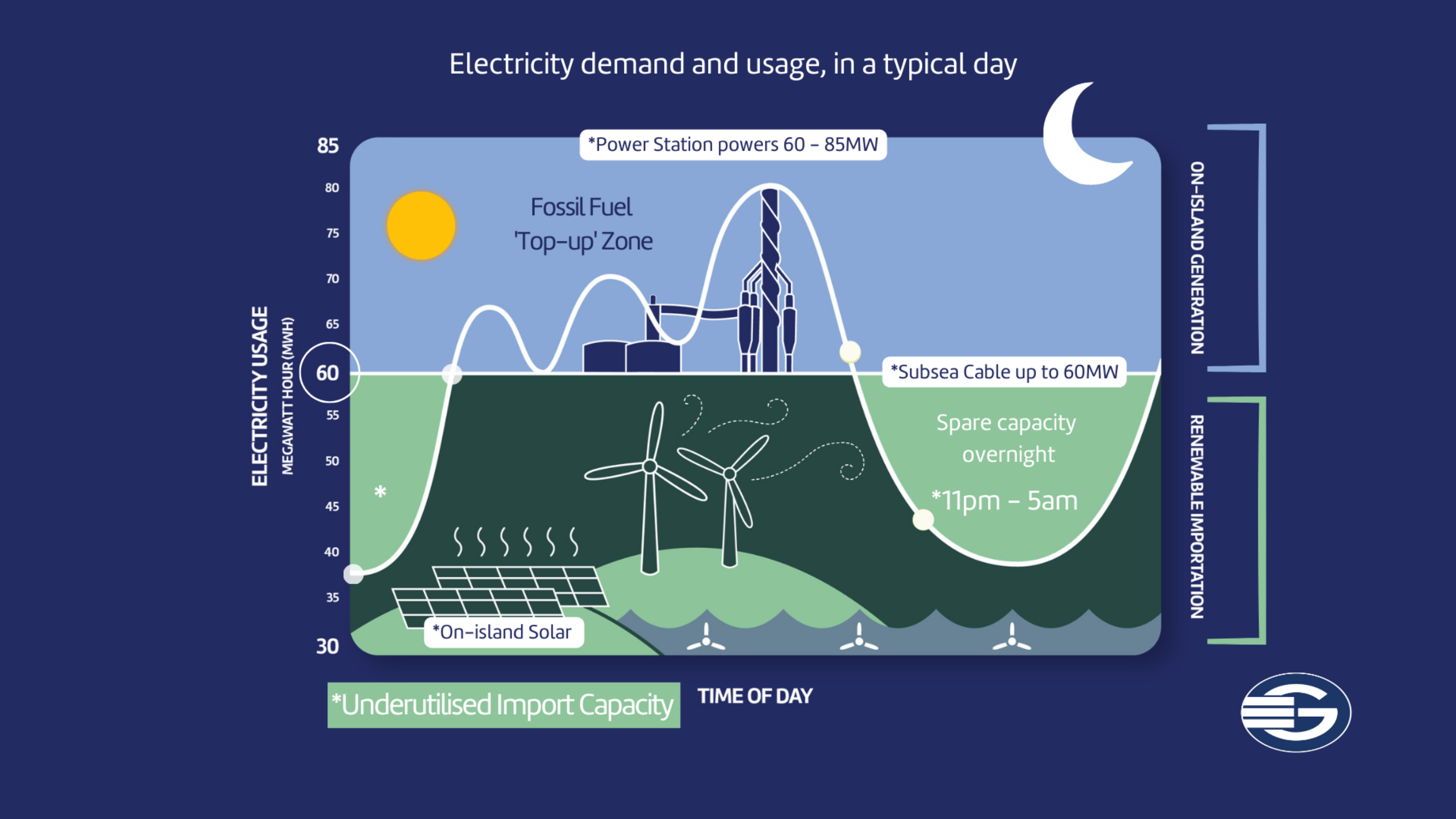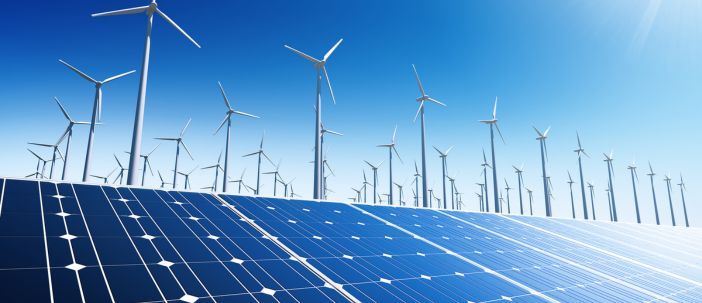How much electricity do we all use?
Guernsey’s electricity demand varies a lot – as a minimum we currently require around 25MW (megawatts) of power overnight in summer and up to 95MW of power on a cold winter’s teatime. Our system has to be capable of accommodating these changes, and when we require more than 60 MW we must use the power station to top up what we can import from France.
Over the course of a whole year, we measure our demand, not by the power (which is an instantaneous measure) but by the volume of electricity we use. In a typical year we use around 380 GWh of electricity – that’s 380 million units.
A typical home will use around 3,500 units for general lighting and power, but the same home with electric heating will use around 3 times that much. Using an electric vehicle charged at home can around 2,000 units to that total.
How is electricity demand changing?
By 2050 it is predicted that most heating systems and road vehicles, such as cars, vans, buses and light goods vehicles, will be electric. Other factors which will also increase demand include a rising population and more electric appliances in everyone’s homes.
Whilst all appliances continue to become more efficient, and more people adopt their own means of generating power (e.g. solar panels) the overall effect is an increasing demand for electricity. This not only means that we expect to see more units of electricity used, but we also expect to see the peak power demand increase.
And though 2050 seems some way off, and making predictions that far out is far from a perfect science, we expect the peak demand to reach around 150MW by 2050. And we expect the total number of electricity units we consume to increase by around 60%. This is a significant increase in demand, and if provided for by burning fossil fuels in the power station will increase the carbon intensity of electricity, meaning that the journey net zero is at risk.

How can this changing demand be good?
We are keen to work with islanders to understand this increase, how much and how they use electricity and how we are going to supply the extra electricity through a different mix of power sources to ensure electricity remains low carbon and the net zero goal can be achieved.
How do I know how much electricity I use myself?
According to the UK government the average UK household uses 3,731 kWh per year. To understand this more, for 1kWh you could boil a kettle 10 times, or watch TV for 7 hours.
With our energy calculator, you can calculate how much it costs to run your different appliances over different periods.
Energy Calculator | Guernsey Electricity
For example, to run an electric heater which has a rating of 2000 Watts for one hour a day, 5 days a week costs as follows:
How can Islanders and Guernsey Electricity help to manage demand?
We’re all familiar with peak and off-peak times for plane tickets, trains, hotels etc. Off peak usage is usually cheaper because it makes use of spare or ‘unsold’ seats or rooms. The electricity network is similar: when there is spare capacity in the system electricity can be provided at lower cost, and also doesn’t require as much ‘topping-up’ from our local power station.
So, by using your appliances, charging your car or switching on your heating or washing machine at off-peak times, you can play your part in reducing the amount of electricity we need to produce through the power station. It also means we have to spend less money uprating the power grid, and this all leads to lower cost for consumers. Tips and suggestions are available at www.electricity.gg/save

When does demand peak?
We used to rely on our fossil fuel power station for all our electricity, but since 2000 the subsea cable connecting us to Europe has been our primary source of electricity, which has dramatically reduced our carbon emissions. However, when demand exceeds 60MW (which is the most we can import through the cable), usually at tea-time and during the winter, we make up the difference by using the power station, and this comes with both environmental and financial costs.
The Electricity Strategy will set out a roadmap for meeting Guernsey’s increasing electricity demands in a sustainable way, using a blend of imported electricity and local renewables, to ensure we meet our net carbon zero target by 2050 while ensuring the Island has a secure and resilient supply.
What to expect over the next few years.
The energy transition is not an overnight phenomenon. Ultimately, it’s a change in the way consumers source and use energy. Whilst governments can set policies and technologies can alter preferences, the energy transition will be a societal change, indeed it already is.
Consumers are choosing electric transport, choosing to install solar arrays and choosing to replace their gas or oil boiler with electric. The technology is becoming more readily accessible and consumers, are more than ever before, wanting to play a part in the energy transition.
Guernsey Electricity is playing its part by helping consumers understand how and when they use electricity as well as ensuring that the mix of generation is more sustainable, secure and meets the island’s increasing demand.










